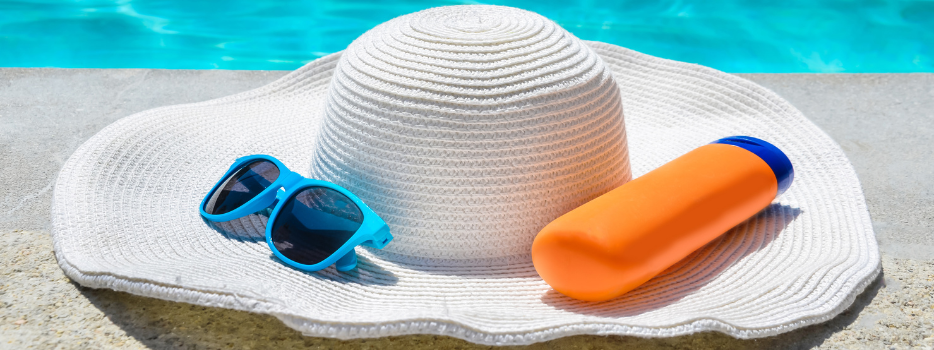With warmer weather and longer days inviting more time outdoors, it’s important to remain mindful of the risks from too much sun. Excessive sun exposure, especially without proper protection, can lead to sunburn, premature skin aging, and an increased risk of skin cancer. Making sure to always protect yourself and others from the sun’s harmful UV rays can greatly decrease the chances of developing skin cancer. According to the American Academy of Dermatology (AAD):
- Skin cancer is the most common form of cancer with more than two million people diagnosed annually.
- One in five Americans will develop skin cancer in their lifetime.
- Having five or more sunburns doubles the risk for melanoma.
Fortunately, sunburn is highly preventable with the right precautions. Following practical strategies can help you enjoy the sun safely while maintaining long-term skin health.
The basics of sunburn prevention
Sunburns can be painful and can lead to serious, life-threatening medical conditions. Every year people of all ages shrug off serious sunburns, without realizing the damage they’ve done to their skin. Sun protection is important for everyone but especially children. Without protection, a child can be sunburned in as little as 15 minutes. Parents and childcare providers are responsible for helping protect children from serious sunburns.
One of the most effective ways to mitigate sun damage is to follow the recommendations of the AAD. They recommend a three-pronged approach to protection:
- Seek shade. Seek shade and avoid prolonged sun exposure, especially during periods when the sun is strongest. It’s best to stay out of the sun when it’s directly overhead (between 10:00am and 3:00pm).
- Wear sun-protective clothing. When possible, wear protective clothing, such as long sleeves, hats, and sunglasses.
- Apply sunscreen. Apply a minimum SPF 30 sunscreen 15 minutes before sun exposure and reapply it every two hours or after swimming or participating in activities that make you sweat.
It’s also important to be aware of sun dangers even when it’s cool and cloudy. People often think that clouds filter harmful UV rays, but that’s not true, so be vigilant during these conditions as well. Also note that sun damage doesn’t always show up immediately, with some burns showing up four hours after exposure, worsening 24-36 hours later, and resolving three to five days after.
Appropriate sunscreen use
The best way to prevent damage from the sun is to avoid exposure, but because it’s unrealistic to always stay indoors, sunscreen will most often be the best defense. Unfortunately, most people who use sunscreen rarely use it properly, which greatly reduces its effectiveness. These tips are designed to maximize the effectiveness of sunscreen and reduce sunburn incidents:
- Choose the right sunscreen. Selecting an appropriate sunscreen is an important first step in protecting yourself from harmful sunburns. Use a water-resistant sunscreen with an SPF rating of at least 30 and broad-spectrum protection against UVA and UVB rays.
- Use sunscreen everyday. Wear sunscreen every day, regardless of weather or time of year. Even on the most overcast days, up to 80% of the sun’s UV rays can pass through the clouds. Sunburn in the winter is also possible with up to 80% of UV rays being reflected by snow and ice.
- Apply sunscreen liberally to all areas that won’t be covered by clothes. Body parts commonly exposed to sun include face, ears, arms, and hands. The AAD recommends that, on average, one ounce of sunscreen is enough to provide the necessary coverage to the exposed parts of the body. Most people use far too little, using around 25-50% of the necessary amount.
By taking a few simple yet consistent precautions, like applying broad-spectrum sunscreen, wearing protective clothing, and seeking shade during peak sunlight hours, you can significantly reduce your risk of sunburn and long-term skin damage. Prevention isn’t just about avoiding discomfort today; it's an investment in your skin’s health for years to come. So, whether you're hitting the beach, hiking a trail, or just enjoying a sunny day outdoors, protect your skin and enjoy the sunshine safely.





